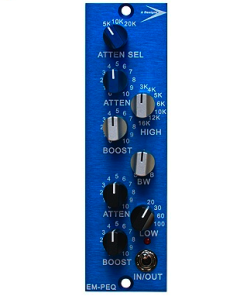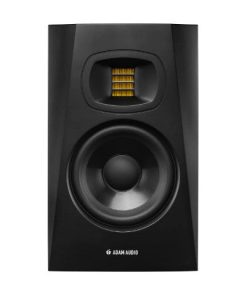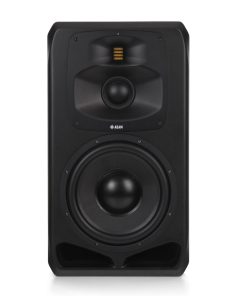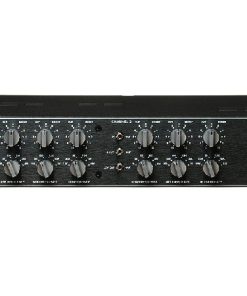RME M-1620 Pro (Milan®) RME
$ 2.999,00 $ 749,75
The RME M-1620 Pro converts 16 analog line-level signals (per channel switchable up to +24 dBu) to and from MADI, ADAT and Milan network technology. This innovative unit is designed with a newly developed front panel that combines LED level meters with a display and includes two separate headphone outputs for monitoring – all within a single-height 19-inch rack device. Cutting-edge converters and flexible internal routing place it at the forefront of any audio network.
Connectivity and Features
- 16 x Line Input
- 16 x Line Output
- 2 x Phones Output
- 4 x ADAT I/O
- 1 x MADI Optical SFP (optional)
- 1 x Redundant PSU (optional)
- 1 x Word Clock I/O
- 1 x MADI I/O coaxial
- 2 x Gigabit Ethernet (802.3 compliant)
- SteadyClock FS
- DC-coupled Outputs
- USB for firmware & remote control
Simplicity at first glance – Flexibility and reliability beyond
RME prioritizes reliability by equipping the M-1620 Pro with built-in redundancy. This includes dual network and dual MADI connections, along with a monitored DC input in addition to the internal AC power supply. A unique system clearly signals when an issue arises, ensuring seamless operation. With full stand-alone capability, users can adjust device settings directly on the unit for quick modifications or to recall entire user-defined presets.
The Milan-certified model transmits and receives up to 128 channels at 48 kHz (96 @ 96 kHz, 64 @ 192 kHz) with precise, fixed latency across a deterministic network. It reveals its status and configurable options to controllers using the open IEEE 1722.1 (ATDECC) standard.
Add Analog and AVB I/O to any existing MADI devices
The M-1620 Pro allows manual configuration of the converter’s aliasing filters for optimal impulse and frequency response. Jitter on digital input signals is effectively reduced with SteadyClock FS. Separate Word Clock BNC and coaxial MADI connectors, with optional optical MADI via an SFP module, allow the device to be easily integrated into existing infrastructure.
Plug & play – rapid user interaction
Control all device states directly from the front panel for convenient, direct access to all features. RME AVB devices can also be fully remote controlled via a web-interface on any network link (including wirelessly over Wi-Fi), allowing for the rapid creation of gain groups, phantom power switching, and routing of signals to headphones for monitoring. The integrated routing matrix allows for quick routing of any analog inputs straight to the headphone output, as well as all digital signals and AVB streams. As such, problem-solving of signals, clocking, connectivity or other issues is both simple and straight-forward!
Prompt Delivery and Professional Packaging
Our long-standing partnership with UPS FedEx DHL and other global carriers lets us offer a range of shipping services. Our warehouse staff is extremely skilled and will package your items according to our precise and exact specifications. Your goods will undergo an extensive inspection and be safely packaged prior to being sent out. Each day, we ship to thousands of customers in many countries. The fact that we are committed to becoming the biggest online retailer in the World is clear. These warehouses are in Europe in the same way as they are in USA.
Note: Orders that include more than one item are assigned a processing period depending on the item.
Before shipping, we will inspect thoroughly the items you have ordered. Most orders are shipped within 48 hours. Expected delivery time is between 3-7 days.
Returns
Stock is dynamic. It's not entirely managed by us since we are involved with multiple entities, including the factory and the storage. The actual stock can change at any moment. It is possible that your order may be out of stock once the order has been placed.
Our policy lasts for 30 days. We cannot exchange or refund your order if it has been 30 days from the date of purchase.
For your item to be returned it must be in its original packaging, unopened and in the condition you received it. The item must be in its original packaging.
Related products
Monitor
Monitor Systems
Monitor Systems
Monitor Systems
Accessories
Headphones
Accessories
Microphones
Monitor
Recording Equipments
Recording Equipments
Equalizers
Monitor
Subwoofer
500 Series
Subwoofer
Monitor
Accessories
Monitor Systems
Monitor Systems
Microphones
Monitor
Monitor Systems
Mic Preamp
Equalizers
Recording Equipments
Microphones





























































